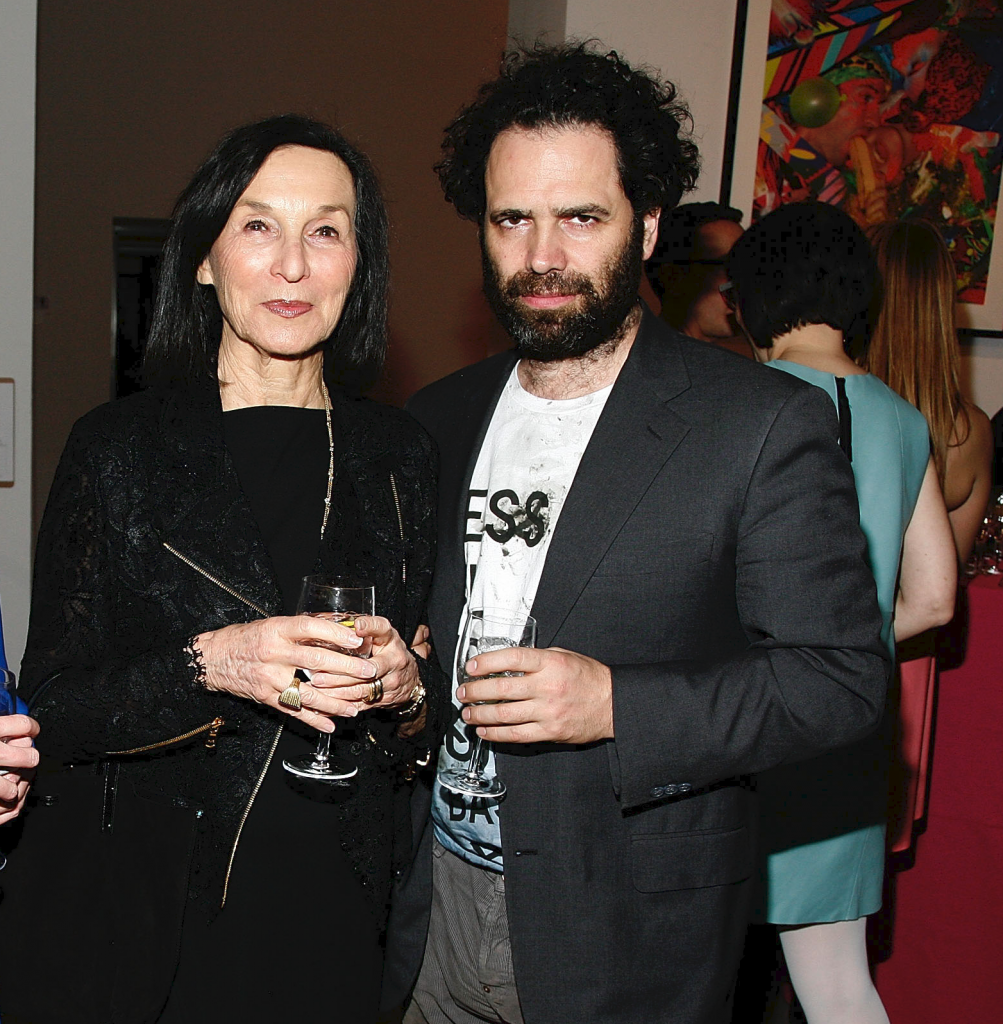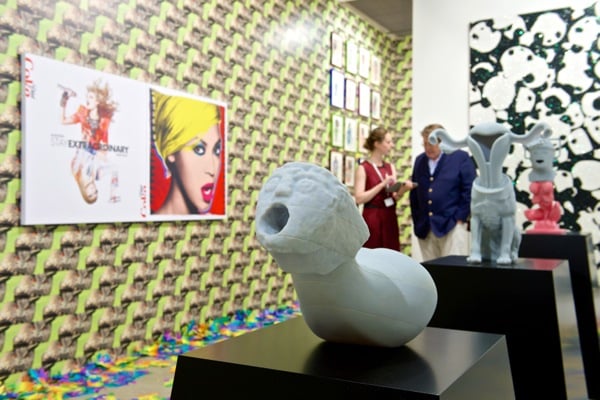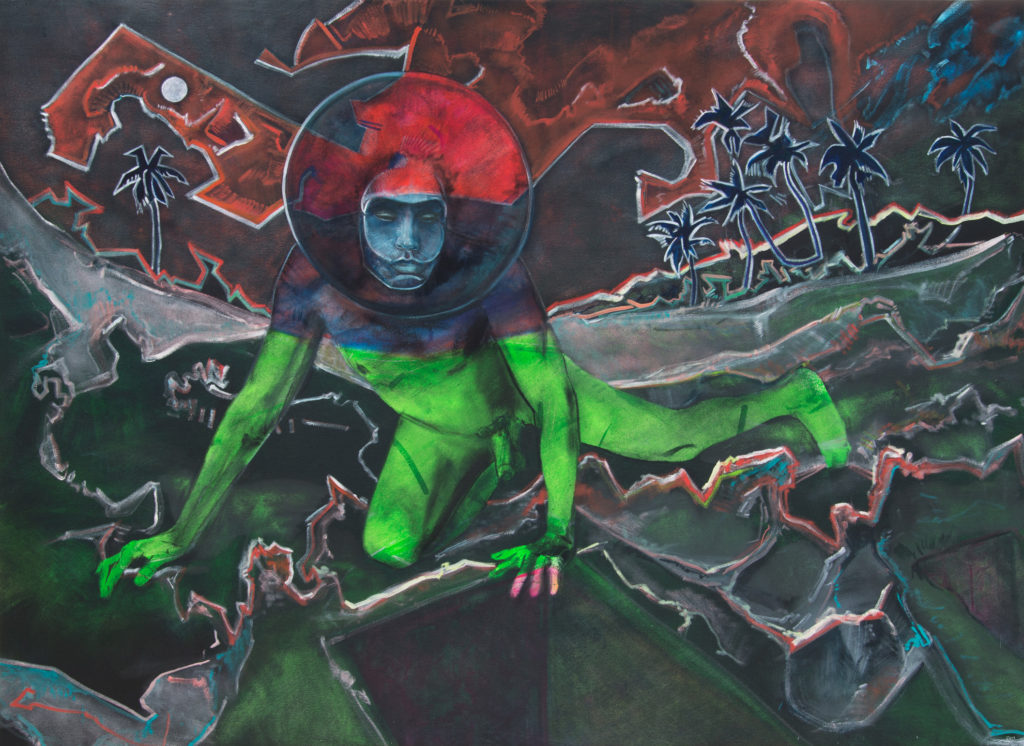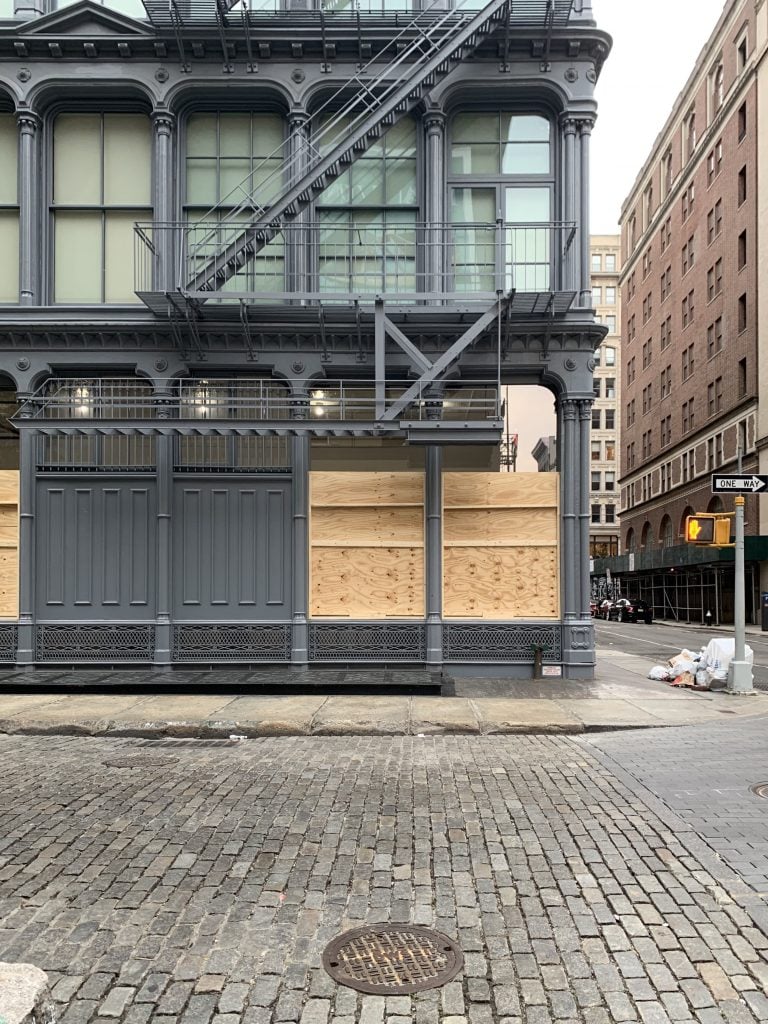Opinion
Why Gavin Brown’s Move to Gladstone Suggests New York Galleries Are Worse Off Than We Thought (and Other Insights)
Our columnist uses the week’s biggest market story to tease out the invisible damage elsewhere in the ecosystem.

Our columnist uses the week’s biggest market story to tease out the invisible damage elsewhere in the ecosystem.

Tim Schneider

Every Monday morning, Artnet News brings you The Gray Market. The column decodes important stories from the previous week—and offers unparalleled insight into the inner workings of the art industry in the process.
This week, moving from the inevitable to the supernatural…
On Monday, my colleague Nate Freeman broke one of the biggest art-market stories of 2020: after 26 years, pioneering dealer Gavin Brown is closing down his namesake gallery (or “enterprise,” if you’re obsessive about branding) to become a partner at Gladstone Gallery. But I’m less concerned with what this development means for the future of galleries than what it likely means for their present and (very) recent past.
First, let’s blast through the bullet points of the deal. Brown will vacate the multi-story, 30,000-square-foot Harlem flagship he opened in 2016, but Sant’Andrea de Scaphis, the deconsecrated church in Rome resurrected as part of Gavin Brown’s enterprise in 2015, “will continue under his leadership,” according to a Gladstone spokesperson. In other words, the outpost could be some kind of independent curatorial project outside Gladstone’s domain rather than a fifth official location on top of the gallery’s three spaces in New York and one in Brussels.
What about the roster implications? Freeman reported that the following 10 artists represented by Gavin Brown’s enterprise will follow him to Gladstone:
… Alex Katz, the nonagenarian painter who last October saw a painting sell for $4.2 million at Phillips in London, as well as Arthur Jafa, the winner of the Golden Lion at the 2019 Venice Biennale. Joan Jonas, who represented the US at the Venice Biennale in 2015, is coming to Gladstone as well, as are longtime GBE artists Rirkrit Tiravanija, Mark Leckey, and Frances Stark.
Brown is also bringing along artists Rachel Rose, LaToya Ruby Frazier, Ed Atkins, and Kerstin Brätsch, all of whom joined his gallery’s roster in the past few years.
In addition, a Gladstone spokesperson confirmed with me Sunday that Brown will also bring with him the estate of Jannis Kounellis, whose memorable (and controversial) installation Untitled (12 Horses) Brown restaged as the swan song of his West Village gallery in 2015 before relocating to Harlem.
Now, Gladstone stated that the program could still continue to evolve. But as of publication time, slightly more than three-quarters of the 48 artists currently listed on the website of Brown’s sunsetting gallery are not yet a party to the new alliance, including GBE mainstays Laura Owens, Rob Pruitt, and Cy Gavin, as well as the Sturtevant estate. So get ready for the new art-market guessing game to revolve around which ones will end up in our inboxes as the subject line of a “Hauser/Pace/Zwirner/Gagosian Welcomes…” email between now and Halloween, since mega-galleries have spent 2020 sucking up artists more relentlessly than one of those always-on robot vacuum cleaners.
Last but definitely not least, it remains an open question whether any of the staff members still employed by Brown’s gallery will have a place at Gladstone. Here’s hoping they buck the layoffs-and-furloughs avalanche that has defined this year in art-world human resources.
With the logistical rundown of the Brown-Gladstone partnership complete, it’s time to get into the reasons behind it. And rather than the macro trends, I want to focus on what appear to be their micro manifestations. Because if I’m right, it doesn’t just mean that galleries of GBE’s size and smaller are in danger going forward; it means that dozens of them likely already died weeks ago, and those of us on the outside just don’t know it yet.

Gavin Brown’s Enterprise’s Booth at Art Basel 2014. Photo: Courtesy Art Basel, MCH Messe Schweiz (Basel) AG
It is indisputable by now that Brown’s choice to close his own well-respected gallery in favor of joining a larger one resulted from pretty much every theme that professional and casual gallery die-hards alike have railed against for the past 15 to 20 years.
Most, if not all, of these are just after-effects of the larger socioeconomic forces that have shaped life and work for the past few decades: runaway wealth disparity, a shrinking middle class in Western high-income nations, the globalization of taste, the consolidation of nearly every industry into a winner-takes-all market… you could keep uncoiling this anaconda, but I think that’s enough to ground this nightmare in reality.
Unleash all of the above onto the gallery sector for long enough, and it becomes inevitable that even a dealer with the aesthetic vision and business savvy of Gavin Brown would be compelled to take shelter with an even stronger dealer. I don’t want to downplay the story’s symbolic and practical relevance—it genuinely shook up more people I respect in the art world than anything in recent memory—but it still strikes me as being as much a math problem as a Greek tragedy.
Brown was measured yet vocal about his and Gladstone’s shared distaste for the status quo of the 21st century art business when he talked to Jason Farago at the New York Times later on Monday:
“I think we both know that there needs to be something more, or something else, especially now,” he said. “To imagine we can all start again with business as usual is a collective delusion.”
Gladstone echoed her new partner in a statement, writing, “I think that this moment in history is an important time to think of new possibilities in the art world.”
Why now, though? Assuming there was nothing exceptionally ill-advised happening in GBE’s financials prior to March 2020 (or, at least, nothing more ill-advised than was going on with many other galleries), it sure sounds to me like this alliance comes courtesy of the shutdown-induced rupture in this year’s art-fair calendar. Here’s Farago:
Their talks accelerated, Mr. Brown said, after Art Basel canceled its principal art fair in Switzerland in June. “It was clear that the economy of the art world was so different, and that conversation became very concrete,” he said.
I emailed Brown on Friday morning to ask about the likelihood of his being able to—or choosing to—continue on independently if not for the lockdown and the ensuing cancellation of the IRL Art Basel (as well as Art Basel Hong Kong and Frieze New York before it). He didn’t reply by publication time.
So all I can say is that it seems reasonable that, without the injections of capital that these big-ticket trade milestones provide roughly every six weeks during a normal year, the cash-flow situation at GBE became untenable. As a reminder, only about half of American small businesses have enough cash on hand to survive a month without customers. And in comparison to a typical small business, galleries face atypically high overhead costs and atypically erratic payment timelines, making their challenges in a cash crunch even more dire.
And it’s this path that leads us to the graveyard. Because if the cancellation of art fairs was indeed the breaking point for Brown—a veteran with an artist roster featuring dependably bankable stars and some of the hottest names of the moment—think about what it must mean for smaller dealers with a narrower margin for error.

Cy Gavin, Marsden Cemetery at Tucker’s Point (2017). Image courtesy the artist.
From even a slight remove, it’s surprisingly easy here in July 2020 to justify the narrative that, against all odds, things in the art market are largely okay—at least, relative to expectations in an era-defining global health and economic crisis.
After all, sales reports from this year’s online-only art fairs seem to show plenty of dealers consistently placing works in the six-figure range, with a handful of transactions for $1 million or more providing a few pyrotechnics. The Big Three auction houses also just collectively sold nearly $1 billion in art in the last 30 days, and many of those same buyers are also active in the private market.
So why not believe most dealers will weather this rough patch just fine?
There are several legitimate feel-good stories out there in the gallery sector, especially at spaces that have been operating in unorthodox ways. But if you want my honest opinion, I have to tell you that I think things are (to quote Pulp Fiction’s Marsellus Wallace) “pretty fucking far from okay” for most dealers.
Which begs the question I’ve heard from several would-be optimists since March: If things are so bad, then why aren’t we seeing more announcements about rank-and-file galleries closing down?
I won’t speak to what might be playing out in other cities, but here’s my theory about New York.
Let’s start with the bricks and mortar. According to real-estate attorney Taso Pardalis, after a maddening regulatory shell game for everyone involved, landlords in New York are unable to serve eviction notices to commercial or residential tenants until August 20, no matter how far behind on rent they may be. And since Governor Andrew Cuomo never implemented a rent freeze during the shutdown, all payments missed by tenants since March have simply accumulated as debts now slated to come due in less than four weeks.
Given the economic melee, then, it stands to reason that thousands of tenants statewide are already sealed inside their own fiscal casket. Until August 20, however, even an irrevocably doomed dealer cannot be pushed out of their rented gallery space.

The Judd Foundation, boarded up in New York City. Photo: Lucie Rebeyrol.
Now let’s game out the overhead costs. Since galleries have temporarily been able to avoid paying rent for four months, what are their other big expenses?
Well, normally, there are the exorbitant costs of doing art fairs… except no one has exhibited at a significant physical art fair since the Armory Show in early March. That’s bad from a revenue standpoint, but good from an outgoing-payment standpoint.
Usually, there’s payroll… but plenty of dealers laid off or furloughed their staff members months ago, and many others run their spaces essentially by themselves, with the help of a few freelancers.
Which leads to the shipping, installation, de-installation, and basic utilities costs of staging regular exhibitions… except no gallery in New York was allowed to operate from mid-March until the final days of June, meaning no one was burning cash to cycle through shows during that span. They didn’t even have to keep the lights on! And even though galleries now can open to the public again, they don’t have to.
Add up all of the above, and what do you get?
The potential for a significant number of what I’ll call ghost galleries: galleries that look real from a distance, but are in fact functionally dead unless a miracle arrives.
Think about it: right now, you could theoretically be tens (or even hundreds) of thousands of dollars in debt, with no sales to speak of for the past four months—and yet no one will bat an eyelash if you’re not opening new shows or participating in fairs. Your landlord can’t evict you until August 20. As long as you’re able to pay the minuscule fees to keep your website operational, it would be nearly impossible to know from the outside that your gallery is doing anything but simply being cautious about reopening.
Unless, of course, you inexplicably decided to tell on yourself. After all, there’s no legal requirement for a dealer to publicize that they’re closing up shop even in normal times, let alone during an epochal catastrophe. And if you care about your business, wouldn’t you exhaust every possible option available in the next four weeks before admitting defeat?
To be clear, this is all just game theory on my part. Still, if a four-month art-fair drought was indeed enough to put the last nail in the coffin of Gavin Brown’s enterprise and spark significant layoffs at the likes of David Zwirner and Pace, I have to suspect that several smaller players are being quietly crushed to death. But the unique circumstances of the New York gallery sector this summer also mean their apparitions can float on until just before the fall season begins.
That’s all for this week. ‘Til next time, remember: the spookiest stories are the most believable ones.